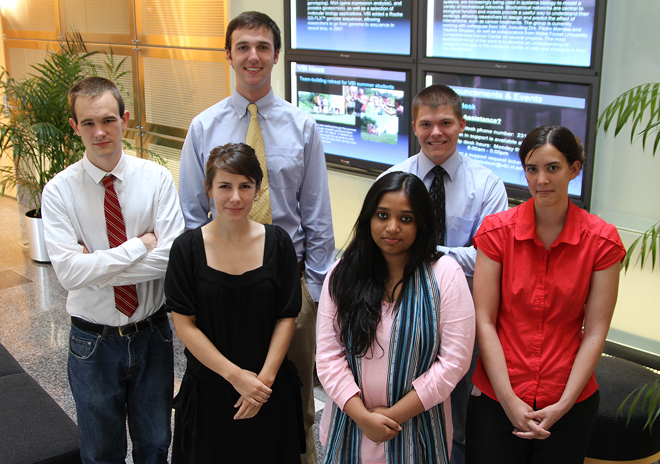Team:VT-ENSIMAG Biosecurity/Project
From 2010.igem.org
(→Overall project) |
(→Overall project) |
||
| Line 54: | Line 54: | ||
The objective of our iGEM 2010 project is to interpret, implement and characterize the Government Guidance. The deeper understanding of the “Best Match” method provided by our findings will help to develop more robust sequence screening software. It will be these software that protect both national security and public health from the potential threats of synthetic genomics. | The objective of our iGEM 2010 project is to interpret, implement and characterize the Government Guidance. The deeper understanding of the “Best Match” method provided by our findings will help to develop more robust sequence screening software. It will be these software that protect both national security and public health from the potential threats of synthetic genomics. | ||
| + | |||
| + | For further details, please see our press release from the Virginia Bioinformatics Institute: | ||
| + | https://www.vbi.vt.edu/public_relations/press_releases/igem_team_helps_prevent_rogue_use_of_synthetic_biology | ||
== Project Details== | == Project Details== | ||
Revision as of 20:34, 20 July 2010
| You can write a background of your team here. Give us a background of your team, the members, etc. Or tell us more about something of your choosing. | |
|
Tell us more about your project. Give us background. Use this is the abstract of your project. Be descriptive but concise (1-2 paragraphs) | File:VT-ENSIMAG Biosecurity team.png Your team picture |
| Team Example |
| Home | Team | Official Team Profile | Project | Parts Submitted to the Registry | Modeling | Notebook | Safety |
|---|
Contents |
Overall project
Gene synthesis is a powerful technology which allows scientists to synthesis entire genes de novo using simple chemical building blocks. Although this technology has existed for several decades, it was only at the turn of the century that a large-scale manufacturing industry began to develop around this technology. Today, there are approximately 45 companies world wide which are capable of producing genes of several thousand base pairs (bp) long for as little as 38 cents per bp.
Although this technology gives scientists a greater ability to direct the evolution of proteins, engineer metabolic networks and entire genomes, it also poses a serious risk to national security and public health. It is just as easy to synthesize a gene from Ebola as E. coli. The reconstruction of the pandemic 1918 Spanish Influenza virus in 2005 provides a precedence for the construction of genes from dangerous pathogens such as Variola major (Smallpox), Ebola, and Bacillus Anthracis. With the complete genomes of such organisms now available online in databases such as the NCBI-GenBank, it is easier than ever for a person of ill-intent to order the genes from any one of the many providers found all around the world.
The United States Government recognizes this threat. According to a 2004 report by the U.S. National Intelligence Council, its greatest security concern over the coming years is that terrorists will acquire biological agents for use as weapons of mass destruction. In November 2009, the U.S. Government published a draft of its, "Screening Framework Guidance for Synthetic Double-Stranded DNA Providers." This guidance outlines the Government's "Best Match" method for screening orders received by gene synthesis companies. The U.S. Government contends that this method provides companies with an effective means of minimizing risk of unauthorized individuals gaining access of dangerous sequences. To this date, the guidance has never been successfully implemented.
The objective of our iGEM 2010 project is to interpret, implement and characterize the Government Guidance. The deeper understanding of the “Best Match” method provided by our findings will help to develop more robust sequence screening software. It will be these software that protect both national security and public health from the potential threats of synthetic genomics.
For further details, please see our press release from the Virginia Bioinformatics Institute: https://www.vbi.vt.edu/public_relations/press_releases/igem_team_helps_prevent_rogue_use_of_synthetic_biology
 "
"
